- Opinion
- Posted
Force of Nature

What is natural building? If we’re seriously trying to reduce the environmental impact of buildings, are we doing enough by switching to renewable energy sources and upping the insulation levels? In this adapted extract from his new book Natural Building: A Guide to Materials and Techniques, seminal eco architect Professor Tom Woolley outlines some of the reasons why natural building is necessary.
“The job of shaping the built environment comes with a responsibility beyond the wants of the paying client, and beyond our personal wants as well. May the wisdom that we bring to our practice include an understanding of the effects of our building designs and materials choices on all beings now alive and their descendents.”(Elizabeth and Adams)
Most of the people who are attracted to natural building techniques share a concern to behave more responsibly towards the environment but as will become apparent in Natural Building: A Guide to Materials and Techniques, many of these people are individuals trying to do something different on their own. There are also examples of organisations with bigger projects embracing natural building ideas but many projects are environmental or organic centres that have adopted natural building as a physical expression of their aims. In time the mainstream construction industry will have to adopt natural building methods and materials but environmental problems will have to become more serious before this happens.
The other aspect of natural building is not informed by doom and gloom prophesies of environmental catastrophe, but natural building is embraced because it is more attractive, creates more beautiful and harmonious buildings and generally makes building occupants feel better. Given the choice between a ‘cheap’ synthetic material product or method of building and a natural one, a subjective decision for the natural option is made. There may be an awareness of the scientific and environmental reasons but not always an understanding of the scientific detail. Intuition leads to the natural alternative.

A self built strawbale house in Putley, Hertfordshire
In our modern technocratic society we do not trust our intuition enough and clever advertising and offers of quick fit solutions can easily sway us. The building industry is very conservative and seems to believe that nothing will work or last unless it is full of toxic glues, chemicals and comes with three layers of plastic wrapping! The client for a building who wants to use natural materials and methods will get plenty of hostile advice that “it will never work” or we’ve never done it like that.” Some professionals will be unwilling to embark on what they see as untried and experimental techniques that are not covered by British standards, Board of Agrément certificates, warranties and indemnity insurance.

A cob house at Cae Mabon, North Wales
For some, natural building only means incorporating a few natural materials into buildings that are otherwise conventional in concept. The basic building may be full of concrete, aluminium, steel and plastic, but some natural materials are added to give a natural impression, or suggest that sustainability criteria are being met. Sustainable building is bedevilled by greenwash and increasingly marketing campaigns try to persuade us that energy guzzling, polluting materials and processes are good for the environment. Some of the examples illustrated in my book may not have gone all the way in embracing natural building principles, but much can still be learnt from the materials which have been used.
At the other end of the spectrum there are people who are trying to create buildings that in their totality have minimal impact on the environment by using natural and local materials for almost every aspect of the building. This holistic approach to natural building can also involve compromise and pragmatic decisions and choices and it seems pointless to indulge in a moralistic debate about whether our approach is more zero impact than that of someone else. On the other hand it is important to be aware that using manufactured and imported materials does have an environmental penalty and that this is a decision to be made with care.
Unfortunately most initiatives to tackle the environmental crisis are concentrated on generating renewable energy instead of using less energy. Reducing consumption and using materials and methods which need minimal manufacturing and transportation should be a much higher priority.
Changing nature of materials
Another source of inspiration for natural building is that of traditional and vernacular architecture. Indeed many will view some of the techniques in the book as ‘turning the clock back.’ However humanity has used natural materials to create shelter and many people in the world still rely on locally extracted and harvested materials. Obviously if you are poor then you have to make do with whatever is to hand. Often this means recycling waste or scrap materials, or it can mean using grasses, turf, earth, clay or stone or even caves.
Modern materials using glass, cement, concrete, aluminium, steel and plastics are essential parts of modern buildings and it would be hard to do without them. Increasingly builders look to produce buildings in ways that eliminate labour, craftsmanship and “wet trades” such as brick and block laying and plastering as very few tradesmen now have these skills and young people don’t want to go into the building industry. As a result, buildings depend more and more on new industrialised materials and less on what appear to be wet, dirty, messy traditional materials. Technological innovation is mostly driven by the profitability of builders and developers and not the welfare of building occupants.
This is often presented as a drive for greater efficiency and even sustainability but a construction industry which is largely responsible for de-skilling is more concerned with cutting corners than the long-term quality of buildings that are produced. The built environment is central to our economy. It affects all of us. However the way in which it consumes natural resources means that it is one of the most significant contributors to global and local environmental problems. The way we use materials, the pollution emitted from building and manufacturing and in the occupation of buildings is unsustainable. There is an acceptance in the main stream of the need for greater efficiency and environmental performance but current policies do not go far enough.

The turf-roofed timber built Thrift cottage, Tewin, Hertfordshire
Use of resources
While buildings were built to last for centuries, now they are glued together for a few decades, part of the throw away society. Often the materials that are manufactured and used in these processes use lots of energy to produce, they come from polluting and dangerous manufacturing processes and rely on plastics and synthetic chemicals. When they fall apart, many of these materials end up in landfill sites as part of normal building practice, which is incredibly wasteful. Many buildings are regularly refitted with the previous interiors stripped out and thrown away. Can the planet afford this method of building and what does it do to our health, our children and us?
Concern about these issues has led many to reconsider natural building because it seems to offer an antidote to the consumer society approach to building. It offers the prospect of returning to more timeless and traditional methods of building. Also natural materials appear to be healthier and less polluting and available locally rather than being dependent on a global corporation and transport system.
However there are also many questions about this approach to building. Can we build buildings to today’s modern health and safety standards under the building regulations? Can we achieve necessary levels of energy efficiency? Will the buildings be sound and stable? Will they keep out damp? Can we get anyone to give us a mortgage for natural buildings and will we be able insure them?

A timber eco house inWales designed by Andy Warren
There are building surveyors, building societies and insurers who will jump on any problems with a ‘told you so’ mentality. These ‘gatekeepers’ to finance and approvals regard materials, which have been used for centuries, as high risk and are much happier to put their faith in unproven modern plastics and synthetic materials that will probably fall to bits in ten years. They are easily swayed by the glossy “technical” literature of multi national companies with patents and accredited systems. On the other hand it is hard to certify natural methods, which rely on good practice on site and the careful selection of materials from the forest or the ground. This involves trust and care that are in short supply in today’s construction industry.
It could be suggested that choosing natural building is making a small protest against the globalisation of everything and helping to behave in a responsible way about the environment. On the other hand it doesn’t mean that we need to reject the many highly useful and ingenious modern materials that have been developed and will help to make natural buildings work better.
A sensible balance between old and new, manufactured and natural is probably the best basis for building so we get the best of traditional and unprocessed materials and the best of clever technical innovation. Using judgement about what to use should be based on sensible pragmatic analysis and technical advice and choosing the best things for the job in hand rather than an ideological perception that natural is right and manufactured is wrong.
If societies across the world could use such balanced judgement about when to choose low impact solutions and restrict energy consuming manufacturing processes to what is really essential, we would have fewer problems with pollution and global warming. Unfortunately building a new cement or plastics factory is seen as progress, good for the economy and creating jobs. Developing countries in particular want to get away from buildings that symbolise a poverty of the past and instead aspire to the same standards that they see in the developed west. Instead we must try and develop low impact solutions, not just because they are good for the environment, but also because they are best for building.
To quote Neil May, one of the UK’s leading pioneers of natural building (from an unpublished paper on “breathability’)
New buildings and renovated buildings need to be built from low energy, minimally processed bulk natural materials. Materials such as timber, earth, stone, straw and other natural fibres are not only the best materials from an environmental point of view. They are also the best materials from a performance point of view. Understood properly, they can and do provide houses which are simple to design, simple to build, simple to maintain, and which give health and satisfaction to those who live in them. This is not a step back to a pre-modern era. It is taking our modern understanding of material science and combining it with modern production techniques and modern designs, to make appropriate buildings for the 21st century.
About the Book

NATURAL BUILDING
A Guide to Materials and Techniques
The Book:
- describes the many materials and methods that have been used by the pioneers of natural building
- discusses the reasons why various materials have been chosen and frankly explains their advantages and disadvantages
- Provides a detailed consideration of all the main forms of natural construction including building with earth, timber and straw bales
- Covers green and natural roofs, lime and masonry, and the use of hemp as well as natural insulation materials, paints and finishes
- Thoroughly examines all the techniques involved
- Analyses the principles of green building and the issues involved in planning and regulatory approvals
This fascinating, clearly written, practical book is aimed at architects, their clients, self-builders, environmental groups, those interested in green issues and the general public. Comprehensive in its coverage, it is packed with information and is essential reading for all those who are interesting in building with natural, environmentally friendly materials. At 195 pages, it is lavishly illustrated with over 220 colour photographs and diagrams.
Available in hardback form for STG £19.95
Order on line www.crowood.com
- Articles
- Opinion
- Force of Nature
- Tom Woolley
- eco architect
- natural building
- green roof
- Planning
- construction
- queens university
- insulation
Related items
-
 New Ejot profile cuts thermal bridging losses by 25mm insulation equivalent
New Ejot profile cuts thermal bridging losses by 25mm insulation equivalent -
 Ireland’s first 3D printed homes insulated with clay foam
Ireland’s first 3D printed homes insulated with clay foam -
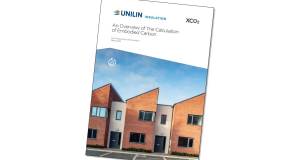 Unilin Ireland launches embodied carbon report
Unilin Ireland launches embodied carbon report -
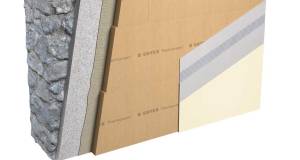 Ecological launches Retro EcoWall for internal wall insulation
Ecological launches Retro EcoWall for internal wall insulation -
 Xtratherm name changes to Unilin
Xtratherm name changes to Unilin -
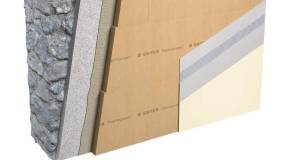 Ecological Building Systems launch Retro EcoWall for internal wall insulation
Ecological Building Systems launch Retro EcoWall for internal wall insulation -
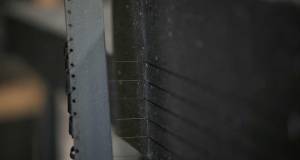 Kore launches low carbon EPS
Kore launches low carbon EPS -
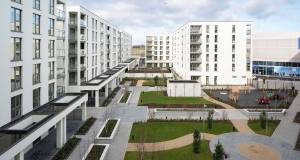 Kilsaran gets NSAI cert for EWI to steel frame
Kilsaran gets NSAI cert for EWI to steel frame -
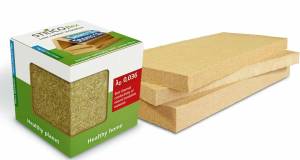 Steico offering free wood fibre insulation samples
Steico offering free wood fibre insulation samples -
 Top 5 questions about specifying structural thermal breaks
Top 5 questions about specifying structural thermal breaks -
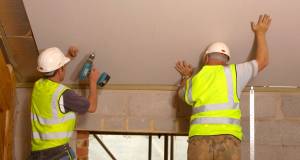 Major new grants for retrofit & insulation announced
Major new grants for retrofit & insulation announced -
 How will we decarbonise heating?
How will we decarbonise heating?

